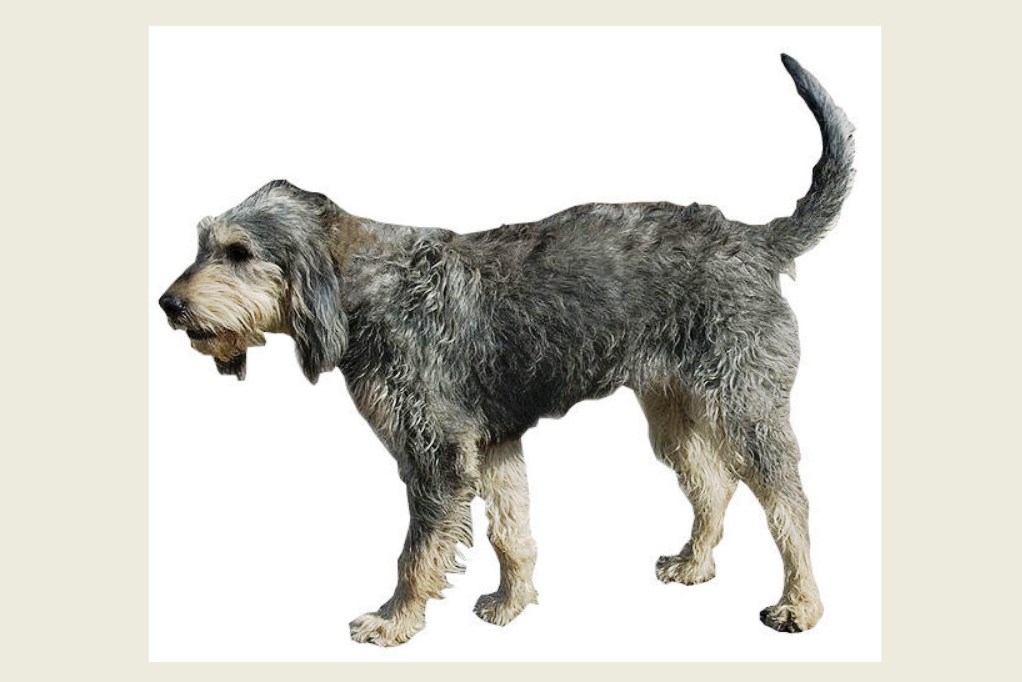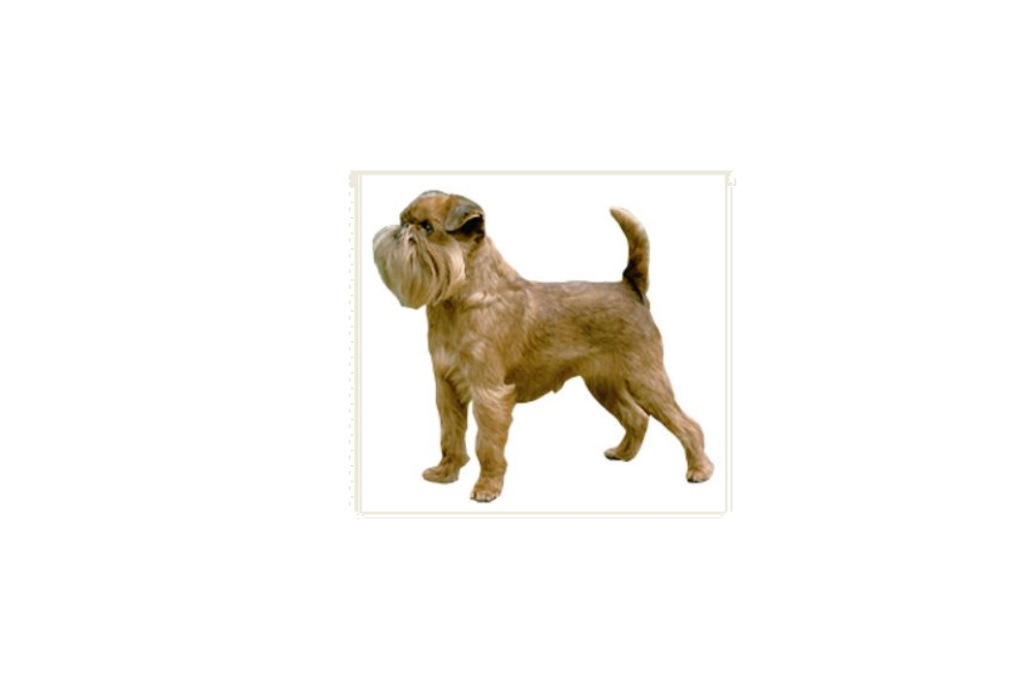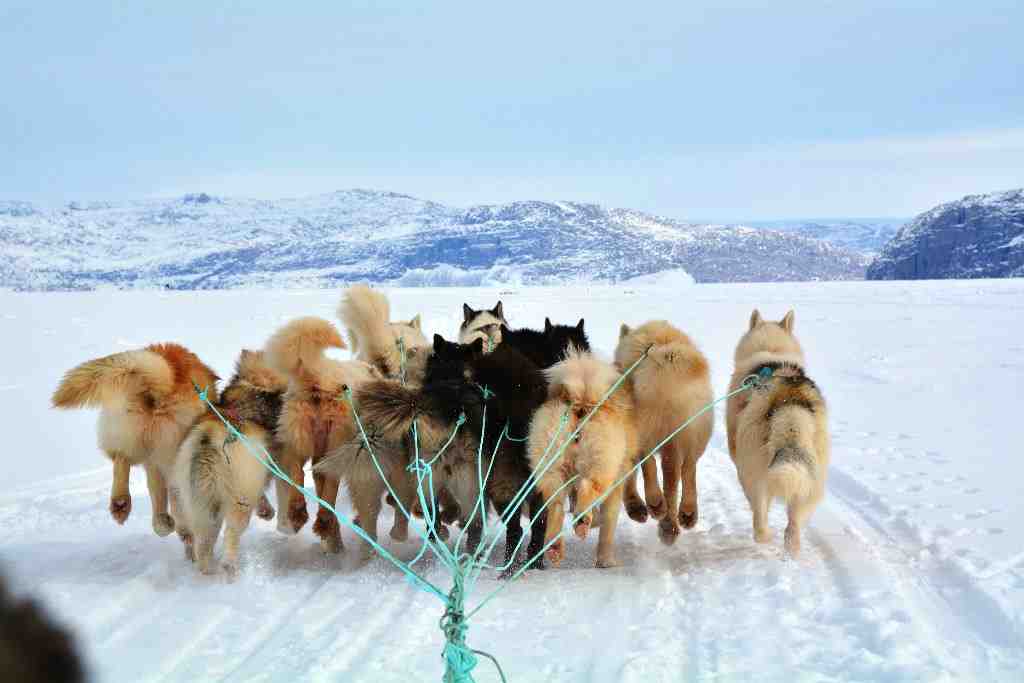The origin of the griffon Nivernais dog breed is in the Nivernais region (which gives it its name) in France. Its origins, according to some scholars, are much more distant. In fact, it is said that this dog is most probably descended from Arabian greyhounds, hunting dogs brought to France by knights returning from the crusades. In fact, there are some portraits of King Louis IX, the Saint, who is depicted with specimens very similar to this dog breed.
It was bred by the French nobility as a companion dog and for hunting, especially wolves and wild boar, but after the French Revolution it almost became extinct. It was also used for hunting small game both in packs and individually.
However, it was thanks to modern French breeders that we can still admire this breed; they were able to reconstruct its characters, creating a smaller dog than the original one. The breeds that were crossed to obtain the final result, thanks to specimens left in the original territory are, the grand griffon Vandeen, with other breeds such as the bleu de Gascogne, the foxhound and the otterhound.
It is one of the most widespread breeds of French hounds even outside national borders.
Character of the griffon Nivernais dog breed
The Griffon Nivernais is primarily a hunting dog, although it is an excellent companion for humans. It needs, however, to be outdoors a lot and lead an eventful life. It is not a dog that can live in a flat or in the city. Its ideal place is a house with a garden in the countryside.
As a hunting dog, it is very tenacious in its work, not particularly fast, but very hardy. It is tireless, passionate about hunting wild boar. Capable of penetrating bushes and thickets, it is also very combative and courageous.
On the other hand, it is also very docile and jovial with the people it knows and especially with its owner, to whom it is very loyal. Even with children he is alert and caring. With strangers, like almost all hunting dogs, he is rather wary, which is why he is an excellent guard dog, ready to defend his family and home from those he considers a danger.
Due to its need for daily exercise, it is not suitable for elderly or sedentary people. With other dogs it is quite calm, much less so with cats, which it considers prey, however if they grow up together there are far fewer problems.
As far as training is concerned, this must already take place when it is a puppy, as as a hunting dog it is rather stubborn, obstinate and independent, but if the owner knows how to assert his authority, its training is fairly easy, although as a temperament it always remains a free spirit.
Appearance of the griffon Nivernais dog breed
The Griffon Nivernais is a medium-sized hunting dog. The height at the withers for a male is 55 to 62 centimetres for a weight of 23 to 27 kilograms; the female usually a little less. It is a rustic dog, with lean limbs and muscles, made more for endurance than for speed. Its build is slender. The tail is high, not long, carried like a sabre and its end can fold on the back.
The skull is almost flat, the muzzle has the same length as the skull and is slightly elongated. The truffle is black and very prominent. The ears are attached at the height of the upper part of the eye, and are quite hairy, are wide of medium length and slightly turned at the tip; the eyes are usually dark, but sometimes also coloured, the look is penetrating and lively. A slight beard is present on the chin.
The coat is quite long and hard to the touch, very bushy and coarse, but not woolly or curly. Thanks to this coat it can easily cope with the most adverse climate.
The colours are generally wolf-grey or blue-grey, but also discoloured black and mottled mottled on the cheeks, above the eyes and inside the limbs. But also fawn with a mélange of black and white hairs giving it an overall dark effect. In any case, the hairs on the extremities of the body are always darker than the base colour.
Care and health of the griffon Nivernais dog breed
The health of the Griffon Nivernais is naturally good and does not show any congenital pathologies or predispositions to genetic diseases. Its life expectancy on average is about 12 years. It can, however, suffer from otitis and stomach-twisting syndrome, although these have rarely been encountered.
The griffon Nivernais is a rustic dog that does not require any special care other than regular brushing to keep its shaggy coat beautiful and healthy.
As far as feeding is concerned, as mentioned before he can suffer from stomach twisting, so it is a good idea to feed him in twos and not let him strain immediately after eating. He needs daily exercise.


